Fuji X-T2 Review: Redefining the X-T Series of Cameras:
I’ve owned and reviewed almost every X Series camera, and pound for pound, at least for me, I felt the X-T1 was the best out of the bunch. Many must have felt the same way because it was a huge hit for Fuji. To top it off, the X-T1 only improved with time thanks to the numerous, and useful firmware updates by Fuji. Even to this day, it’s still a camera to be reckoned with in my opinion. I did review the X-Pro2 when it was first released, and at the time, I assumed a lot of the tech from that camera was going to find its way into the new X-T2. The funny thing is, even with all the new tech, I wasn’t as excited as I thought I would be when the X-T2 was officially announced. That’s because the X-T1 had pretty much everything that I was looking for in a mirrorless camera. I was even okay with the 16 MP sensor vs. the X-Pro2’s 24 MP. I was really happy with the camera, and I couldn’t imagine Fuji improving it that much more where I would notice significant differences, especially since the X-T2 is a few hundred dollars more than its predecessor. Well, I’ve been using the X-T2 since its release date, and I have to say, I am mighty impressed.
Fuji X-T2 Build Quality:
In terms of build and overall design, the new Fuji X-T2 (B&H Photo/Amazon) looks pretty much like its predecessor. However, there are a few key changes that make the X-T2 even better. For one, it’s actually a little larger than the X-T1, and at first, I was a afraid that this wasn’t a good thing. I know it’s only slightly bigger but I fear when manufacturers increase a product’s size even by a little bit because it always starts with just an incremental increase, and before you know it, the product is a lot larger than it was originally intended a couple of generations down the line :). Plus, I liked how the X-T1 felt in my hands, so I wasn’t sure how I would feel about the X-T2. But it doesn’t feel any larger, and it’s actually more comfortable to hold. The grip alone feels better, and the X-T2 actually feels better balanced with longer lenses than the X-T1.
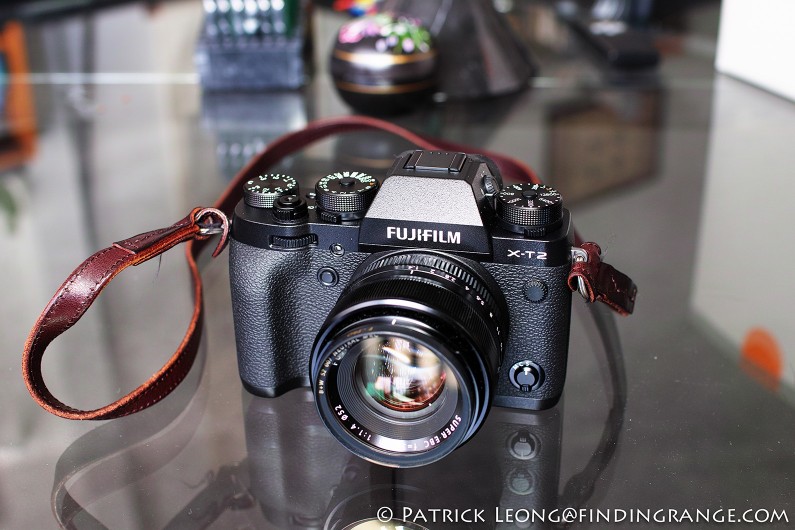
↑ The Fuji X-T2 with the XF 35mm f1.4.
Build quality is just as good as the X-T1, if not better. It feels completely solid in every way, which makes sense given that the body is made of magnesium alloy. The X-T2 is weather sealed in 63 points against dust and moisture, and it can operate in temperatures as low as -10ºC. I feel both the battery cover, and the SD card cover are substantially better made than the ones on the X-T1. It’s one of the first things that I noticed. There are now locking mechanisms on both covers as well. Speaking of the SD card cover, the X-T2 features dual slots to accommodate two SD cards, which I think is awesome, especially since Fuji were also able to keep the overall size about the same as the X-T1. Both slots are compatible with UHS-II standards, and you can use them for sequential recording, backup, recording RAW files in slot one, and jpegs in slot 2 or assign one of the slots for video storage.
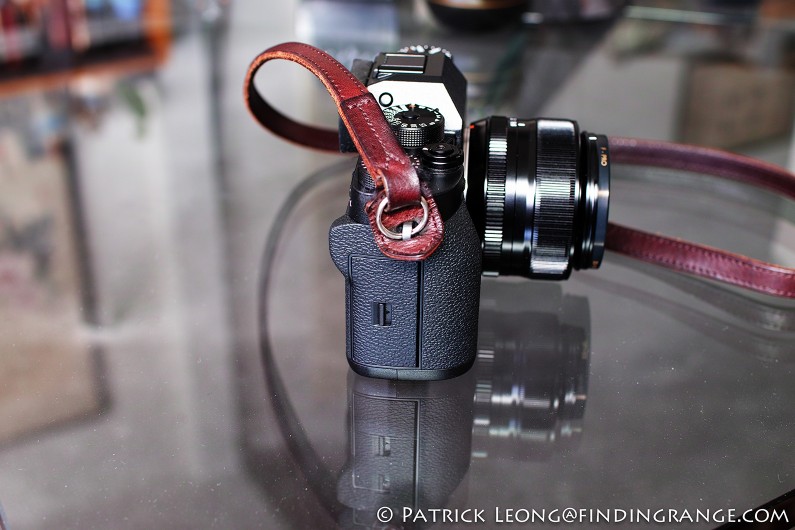
↑ The SD card slot now has a locking mechanism.
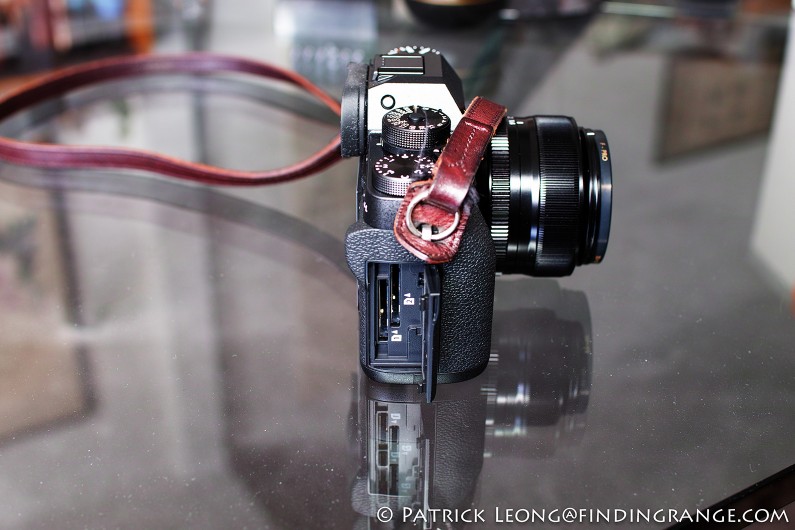
↑ Dual card slots.
The solid and professional built quality goes further than the outside shell. For instance, the focal plane shutter has a maximum speed of 1/8000 sec compared to the X-T1’s 1/4000 sec, and a flash sync of 1/250 sec compared to the X-T1’s 1/180 sec. The shutter has the durability of 150,000 shots. There is also a fast, ultra silent electronic shutter with a maximum speed of 1/32,000 sec, which is quite useful when you want to shoot with large apertures in bright sunlight.
Of course, you have the fantastic analog controls, which is basically one of the hallmarks of the X-T Series of bodies. It’s also one of the main reasons why I’ve stuck with Fuji X Series products since the original X100. In my opinion, nothing is as direct, fast, and as simple as being able to physically adjust important settings.
The dials and controls are pretty much laid out in the same way as with the X-T1, so anyone with the previous model should feel completely at home with the Fuji X-T2 (B&H Photo/Amazon): you have an ISO dial, a shutter speed dial, and an EV compensation dial but there are a few changes. Good changes :). For one, the highest settings on the ISO dial are now 12,800 and H instead of H1 and H2 on the X-T1. You can choose between 25,600 and 51,200 ISO for the H setting by going through the menu. Under the ISO dial, there is a switch to adjust the drive mode. As for the shutter speed dial, the highest shutter speed now reads 1/8000s. Under it, there’s a switch to adjust the metering mode. Both these dials feature new lock and release buttons, which are extremely handy. Instead of having to press and hold the buttons to turn the dials, which can get annoying when you’re wearing gloves in the winter for instance, you now only have to press the buttons once to unlock them, and press them again to lock them back up. It’s simple and effective. The EV compensation dial does not have this feature but it is a lot tighter than on previous X cameras, so accidental movement is not an issue anymore. They finally fixed it! The exposure compensation dial allows for adjustments in 1/3 increments up to ±3EV but unlike the X-T1, there is a new C position, which allows up to ±5EV of exposure compensation adjustment.
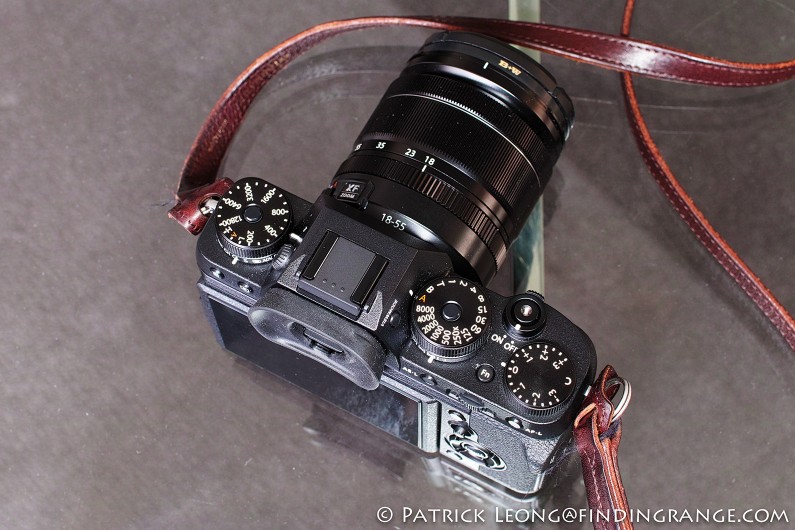
↑ The top plate of the X-T2.
The only issues that I can think of are two: First off, the menu seems to be a little more complicated to navigate than before. But in all seriousness, I am just nitpicking here since this is a review. It’s generally quick and easy to navigate; I just found it difficult to find one or two selections. The other issue is I would like a larger battery. I know, no one wants to re-buy more batteries but if you want the current battery as a spare for your X-T2, you’ll still have to buy the updated Fuji NP-W126S Li-Ion Battery. Plus, I think with all the newer electronics (which I will talk about more below), and newfound capabilities, it makes sense to increase the battery size. Other than those two minor issues, I am very happy with the overall build of the X-T2.
Fuji X-T2 EVF:
Of course, just like its predecessor, the Fuji X-T2 (B&H Photo/Amazon) comes with an electronic viewfinder, and initially, it may sound like it’s essentially the same viewfinder as the one found in the X-T1. It has the same 2.36 million-dot resolution, display lag time of 0.005 seconds, and a magnification ratio of 0.77x. It even has the same mode settings.
For instance, there is the Full Mode, which takes advantage of the high magnification ratio of the EVF, and basically maximizes the full field of vision available. It fills nearly the whole EVF, and this mode is my personal favorite. Then there’s the Normal Mode, which shrinks the field of vision down a little bit. There is also the Vertical Mode,which means when you hold the camera vertically, all the information displayed will automatically, and seamlessly rotate as well. Lastly, there is the Dual Mode, which works great when you are manually focusing a lens. A split screen is displayed where one lets you see the regular view of the scene, while the other let’s you see Focus Assist view (focus peaking and digital split image). This allows focusing to be done quickly and easily because you get to see both the overall scene and a magnified version for precise focusing.
Even if the X-T1’s viewfinder was used in the Fuji X-T2 with no modifications, it would still be perfectly fine because in my opinion, it’s still one of the best EVFs around. The resolution is in line with its competition, and the magnification ratio makes it so easy to see through the viewfinder. Fuji also went beyond just using an EVF as just a simple alternative to an OVF. They took full advantage of what possibilities an EVF can bring to the table. The different mode settings work efficiently with no problems whatsoever, and they just make the shooting experience that much better. Still, this is one of Fuji’s flagships, so like almost everything they’ve made in the X Series, they wanted to push the envelope further.
So, there are a few worthy upgrades to make this EVF even better than the one on the X-T1. For one, the X-T2’s viewfinder is 2 times brighter than the X-T1’s. The EVF also features an automatic brightness adjustment function, and it eliminates false colors or moiré. While the EVF normally refreshes at a rate of 60 fps, it can go as high as 100 fps in Boost Mode, which is even maintain in low lighting. Lastly, the X-T2’s blackout time is less than half of that of the X-T1.
All these specs sound great but I don’t feel they truly convey how good this EVF really is on the Fuji X-T2 (B&H Photo/Amazon). With an EVF like this, it can truly replace an OVF for some (I know there are purists out there). It has for me at least; I chose the X-T2 over the X-Pro2, and I haven’t once felt like I was at a disadvantage for not having an optical viewfinder. The magnification ratio alone makes this one of my favorite viewfinders. It’s so easy, and comfortable to see through it.
Fuji X-T2 Three-direction tilting LCD screen:
Now, what’s really cool about the Fuji X-T2 is the new three-direction tilting LCD screen. It’s a 3-inch LCD display with 1.04 million dots, and it uses toughened glass. Not only does it tilt up and down when shooting in landscape mode, it can also tilt upward when you have the camera in portrait orientation. I found this to be super useful. There are many times when I used to shoot with my X-T1, and I had trouble framing the shot because I was shooting at a very low angle making it difficult to see the screen or through the viewfinder. I remember saying to myself a few times, it would be so cool if the screen would somehow tilt upwards, and it’s as if Fuji read my mind because now it does! With the soon to be released Fuji GFX, we will also see a rotating viewfinder, which definitely intrigues me :).
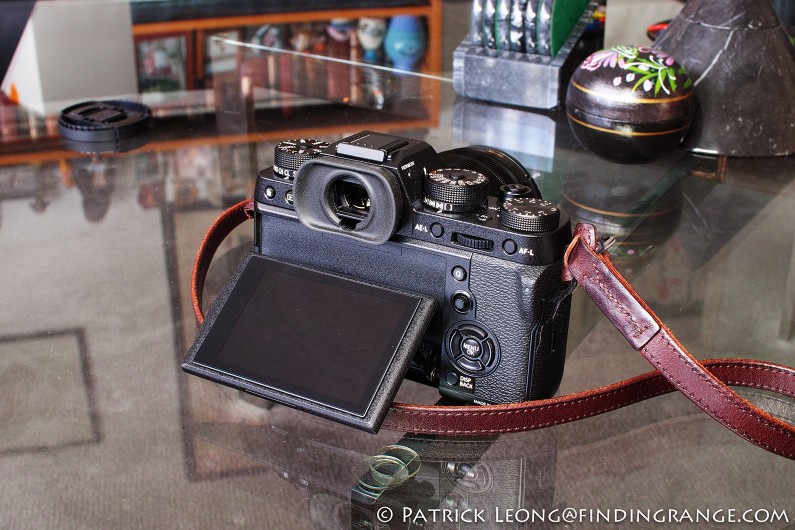
↑ The 3 way tilting LCD screen.
Getting back to the X-T2’s LCD screen, for those concerned about the durability, so far, there hasn’t been any problems. Tilting it up and down in landscape orientation works great. It definitely feels tight and sturdy. Tilting it upwards in portrait orientation feels the same. To tilt it upwards, you simply unclip the lock on the side, and pull forward. The screen has no problems staying tilted upwards, and when you push the screen back into its closed position, it locks back up. Even though there’s one more direction that this screen can move when compared to the X-T1, it still fits completely flush to the body when not in use.
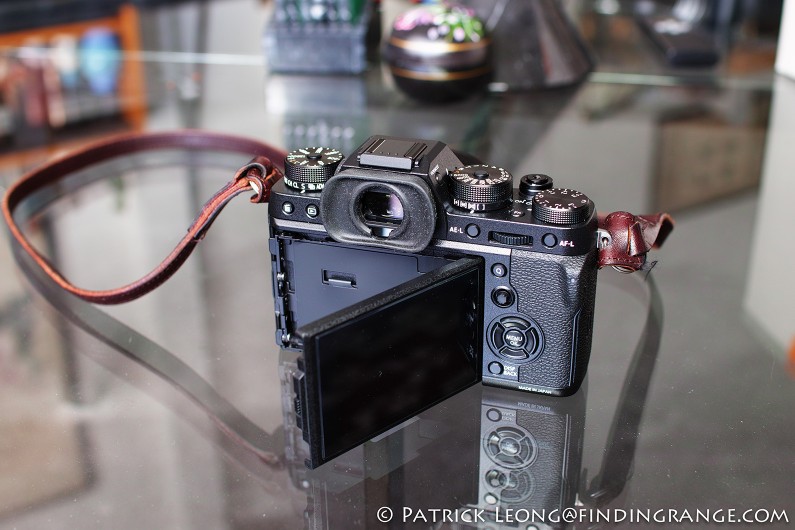
↑ The LCD screen can tilt upwards for when you have the X-T2 in portrait orientation.
Fuji X-T2 4K Video Recording:
As you can see, the new X-T2 has a lot of excellent features. Another great feature, which is a first for a Fuji X Series camera, is the ability to record 4K video. I don’t shoot video at all but I still think this is a very important feature to include because there are so many people who do nowadays. The X-T2 captures about 1.8x the required number of pixels for 4K, and 2.4 times the required data for HD video to give you top movie quality free things like moiré and artifacts. It supports 100Mbps high video bit rate recording, Clean HDMI output for 4K, and there is a log gamma “F-Log” that you can choose to record a wider dynamic range than normal video mode. Record times for 4K are about 10 minutes but can be increased to approximately 30 minutes with the optional Fuji VPB-XT2 Vertical Power Booster Grip. What I particularly like is that you can use the Film Simulation modes in video recording as well.
Fuji X-T2 Autofocus:
In terms of the autofocus, it’s safe to say that it is no longer the Achilles’ Heel of the X Series. The number of focus points has increased from 49 to 91 (up to 325). In addition, thanks to high speed processing and improved algorithms, autofocus performance has been improved significantly. It’s easier for the camera to now focus on low contrast subjects, points of light, and fine textures. Accurate focusing can even be obtain in lighting conditions as low as -3EV. Furthermore, accuracy for Face Detection and Eye Detection have also been improved.
Fuji has also gone to great lengths to improve the AF-C tracking abilities of the X-T2. Depending on the type of movement, you can choose individual settings for Tracking Sensitivity, Speed Tracking Sensitivity, and Zone Area Switching. There are 5 different presets that combine specific settings of these three factors but if that’s not enough, you can create your own custom profile as well.
But enough with the specs. All you need to know is that the autofocus is definitely very fast. Combined with a start up time of 0.3 seconds, and its burst mode speeds, which are up to 8 fps (mechanical shutter), 14 fps (electronic shutter), and 11 fps (mechanical shutter with the Fuji VPB-XT2 Vertical Power Booster Grip), you have quite a capable speed demon on your hands. There is even a Focus Lever designed to help you make quick changes to the focus area. If you add the VPB-XT2, you can even achieve shooting intervals of 0.17 seconds, and a shutter release time lag of 0.045 seconds.
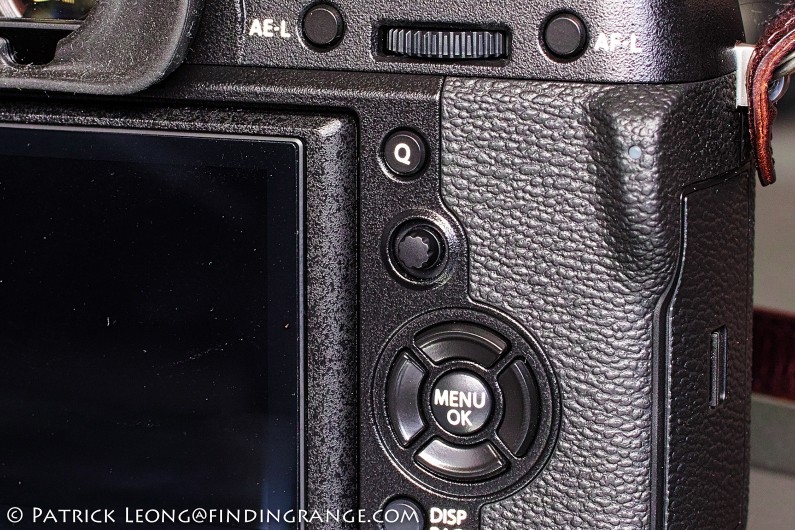
↑ The Focus Lever, which is right above the D-pad.
Compared to its competition, I don’t want say that the X-T2’s autofocus is faster than cameras like the Pen-F or a6300 because first off, I would need those other cameras here to compare it to the X-T2. Plus, there are so many different factors that one has to account for when comparing autofocus speeds. The choice of lenses will affect autofocus speed as well. But it’s safe to say that the autofocus is definitely on par with its competition now, and I think that’s the most important factor. I said this a few times already but I just want to emphasize this some more: it’s definitely fast, and I am completely satisfied with it. Furthermore, it’s not only fast, I found it to be much more accurate in the field than before. It seems to almost have a telepathic connection to me at times because it just locks on to the subjects that I want. It’s so good now that it’s something you don’t even have to think about anymore, if that makes sense.
The beauty of it is, I would imagine that we haven’t even really reached the full potential of the X-T2’s autofocus capabilities. As we all know, Fuji’s firmwares dramatically improve all their products. Look at past cameras, and see how much the autofocus on those have improved over time. The autofocus is already fantastic now. I can’t even imagine how much better it might get in the future.
Fuji X-T2 Image Quality:
As for image quality, if you liked what you saw from the X-T1, you will definitely be impressed by what the Fuji X-T2 (B&H Photo/Amazon) delivers. Quite frankly, I just love what this camera produces. With a 24.3 MP X-Trans CMOS III APS-C sensor, which is essentially the same sensor found in the X-Pro2, you’ll get images that are ultra sharp, and crisp with plenty of detail, especially since the optical low-pass filter has been omitted. Of course, you’ll get wonderfully beautiful, punchy, vibrant, and bright colors to accompany all of that sharpness as well. Furthermore, images have that three dimensional depth, and clarity to them that make them look real. You’ll also get excellent dynamic range, and raw files that you can really push in post-processing. Quite frankly, if you want to get the most out of those superb Fuji lenses, this is the sensor you need to try.

↑ This was taken with the Zeiss Touit 12mm f2.8 at f8, which is one of my favorite lenses.
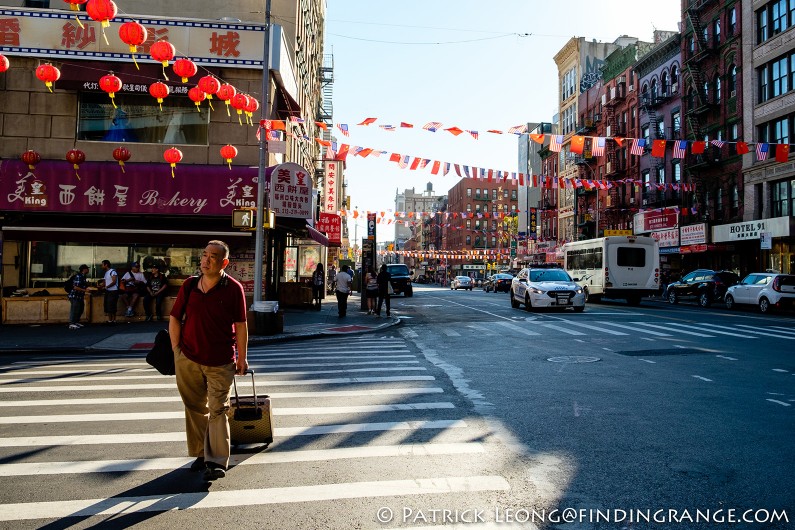
↑ I used the XF 18-55mm at f5.6 for this picture.

↑ The XF 35mm f1.4 is still one of my favorite 50mm equivalents. This was taken at f1.4 at 400 ISO.
What I really like about Fuji is that their cameras don’t necessarily need to shoot in RAW to produce excellent results. Yes, you will get the most out of RAW files but, as always, Fuji X Series cameras generally produce fantastic out of camera jpegs, and the X-T2 is no exception. In fact, I bet there are some that will never feel the need to even shoot RAW files based on how good the out of camera jpegs are. Just like other X Series cameras, there are Film Simulation modes that you can choose from, which are Provia, Velvia, Astia, Classic Chrome, Pro Neg. HI, PRO Neg. Std, Monochrome, and Sepia. There is even a new ACROS mode, which is produces smoother gradation, deeper blacks and excellent textures. It is said to be a vast improvement over the previous Monochrome mode.
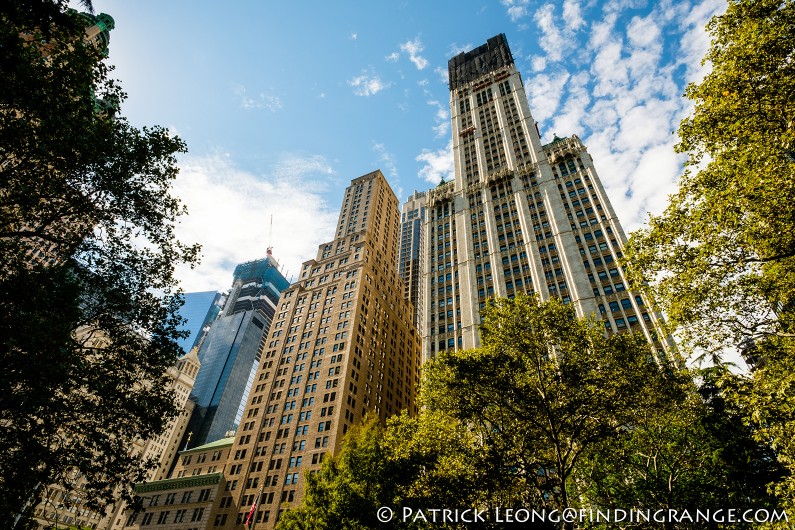
↑ This was taken with the Zeiss Touit 12mm at f11.

↑ Here’s another taken with the XF 35mm f1.4 wide open.

↑ Here’s one taken with the XF 56mm f1.2 APD wide open.
In addition, noise is also very well-controlled at the higher ISO ranges as well, so shooting in dimly lit situations is not an issue. ISO ranges from 200 to 12,800 ISO, and can be extended down as low as 100 ISO or as high as 51,200 ISO. As you climb up the ISO latter, you’ll lose a bit of dynamic range, which is normal, and if you’re pixel peeping, you’ll see noise start to creep in at 3200 ISO but I was completely comfortable shooting this camera at 6400 ISO. In my opinion, you can get perfectly useable files at 12,800 ISO. Overall, I found the high ISO capabilities of this sensor to be quite impressive. Below are a few examples with a couple of 100% crops.
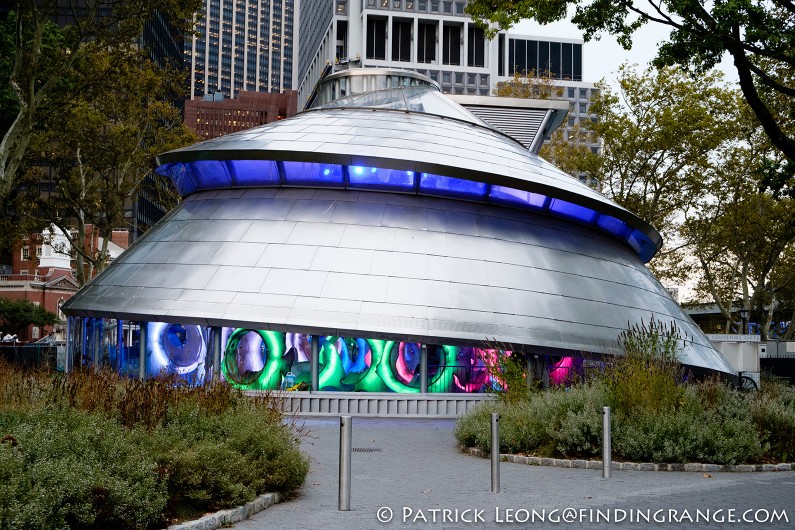
↑ This was taken with the XF 18-55mm at f5.6. I used 1600 ISO, and as you can see, it is very clean.

↑ Here’s a photo taken with the XF 18-55mm at f5.6 using 6400 ISO.

↑ Here’s another taken with the same lens at f4 using 6400 ISO.
↑ This was taken with the XF 18-55mm as well at 12,800 ISO.
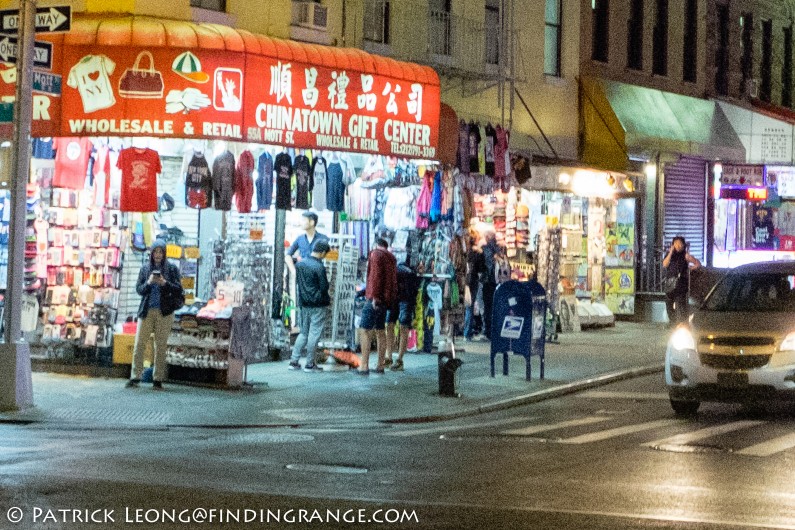
↑ Here’s a 100% crop of the photo above.
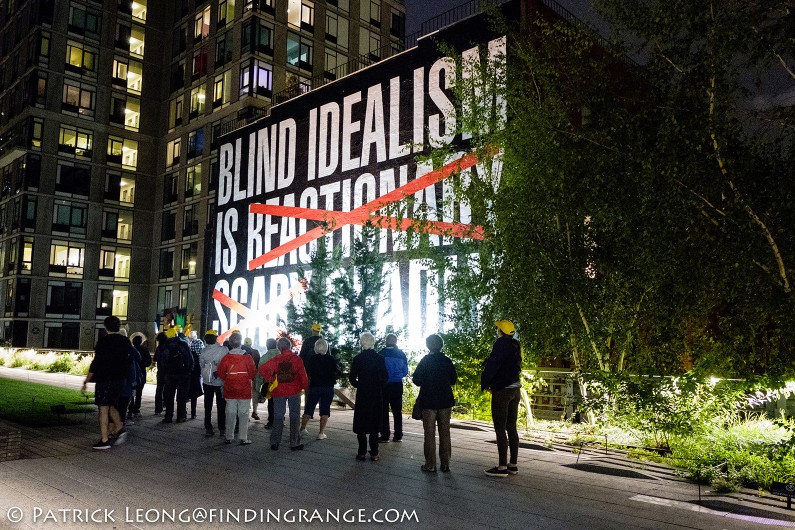
↑ This was taken at 25,600 ISO at f4 using the XF 18-55mm.
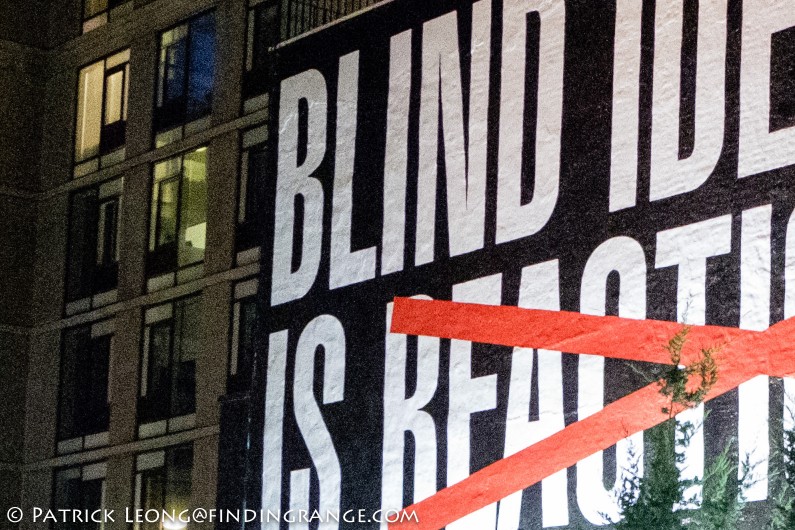
↑ Here is a 100% crop of the photo above.
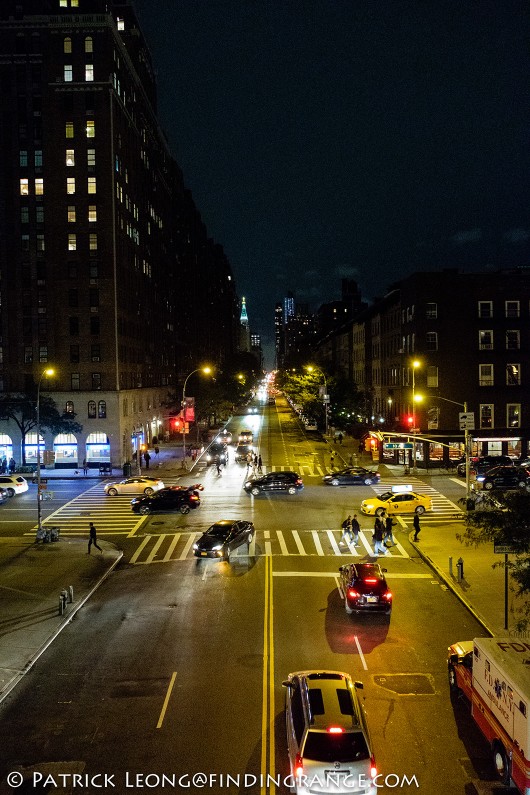
↑ Here is another photo taken at 25,600 ISO f4 using the XF 18-55mm. It’s getting noisier but it’s still not bad at all.
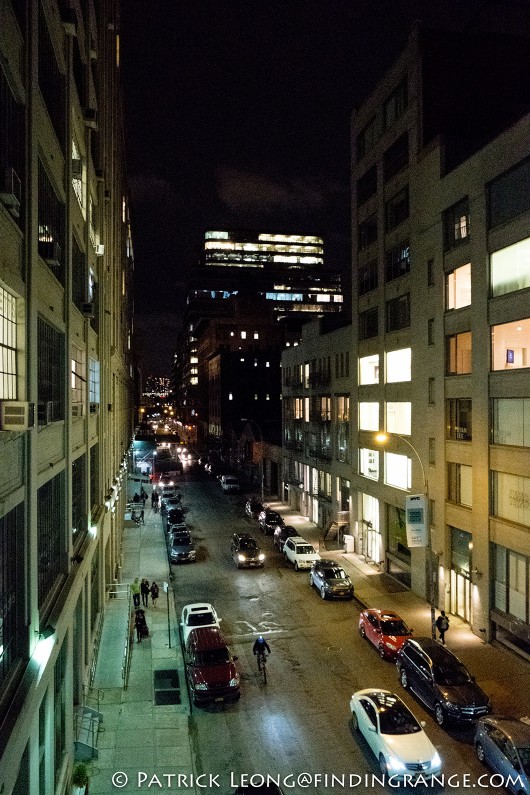
↑ Here’s one taken with the XF 18-55mm at f5.6 using 51,200 ISO. If you really needed it, you can use the high ISO in the X-T2. Keep in mind that this photo was actually slightly underexposed, so I had to bring up the exposure a bit.
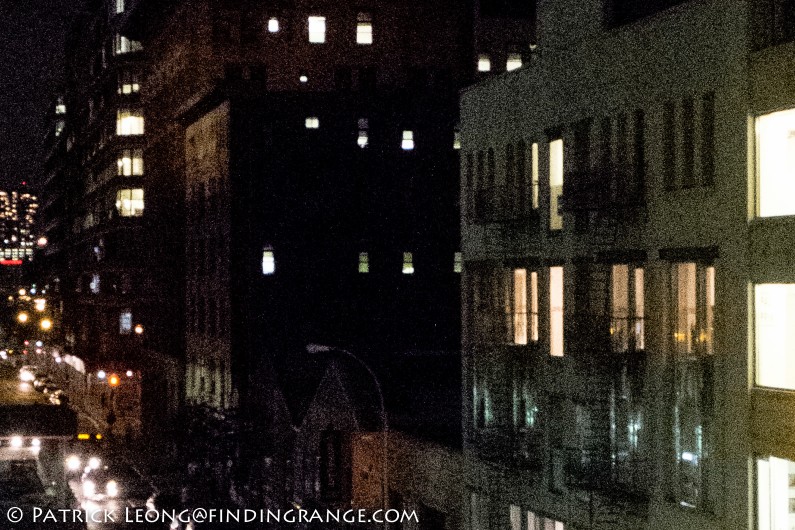
↑ Here’s a 100% crop of the photo above.
Fuji X Series cameras have always produced excellent results but I feel the Fuji X-T2 (B&H Photo/Amazon) (along with the X-Pro2) are definitely pushing the envelope even further. But it’s important to point out that it’s not just the sensor that creates such superb images. Fuji have backed up their excellent camera bodies with some of the best optics out there. Practically all their lenses produce fantastic images, and as new lenses are being introduced, they only seem to get better. This new sensor in the X-T2 along with the glass that is available will give you truly breathtaking and professional results.

↑ Another photo taken with my Zeiss Touit 12mm at f11.

↑ Here’s one taken with the XF 35mm f1.4 wide open.
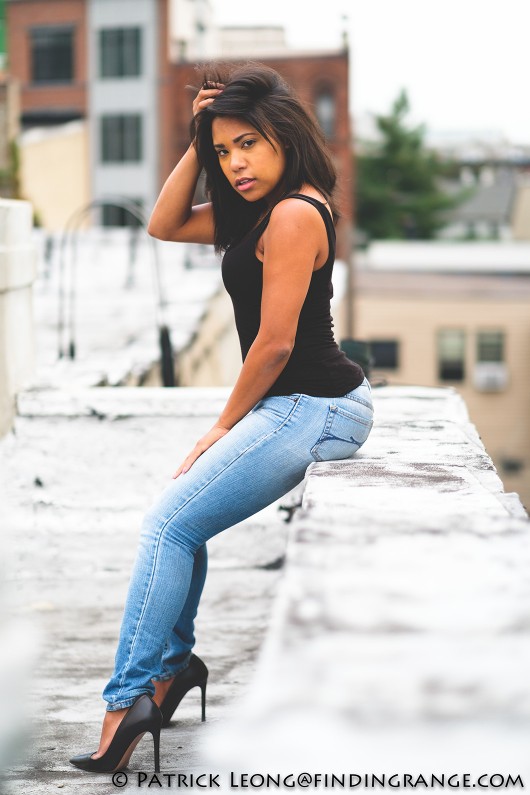
↑ This is from a portrait shoot. Maybe I will post more from this shoot in the near future. It was taken with the XF 56mm f1.2 APD wide open. This lens is a great match with the X-T2.
Fuji X-T2 Pros And Cons:
Fuji X-T2 Pros:
- Excellent build quality.
- Weather sealed
- Compact.
- Superb EVF.
- Three way tilt screen.
- Ultra fast autofocus system.
- Overall, very quick camera.
- Truly excellent image quality.
- Excellent high ISO capabilities.
- The X-T2 is backed by some of the best optics out there.
- Overall an extremely versatile and capable camera that not only performs professionally but also produces professional results.
Fuji X-T2 Cons:
- Personally, I would like a larger battery.
- Menu is a little more complicated than before.
Fuji X-T2 Verdict:
Simply put, this effort by Fuji has definitely produced one of the best mirrorless cameras currently out on the market. It really just nails every single category with flying colors. I am truly, truly happy with this camera in practically every way. In fact, this is my own camera, not a loaner.
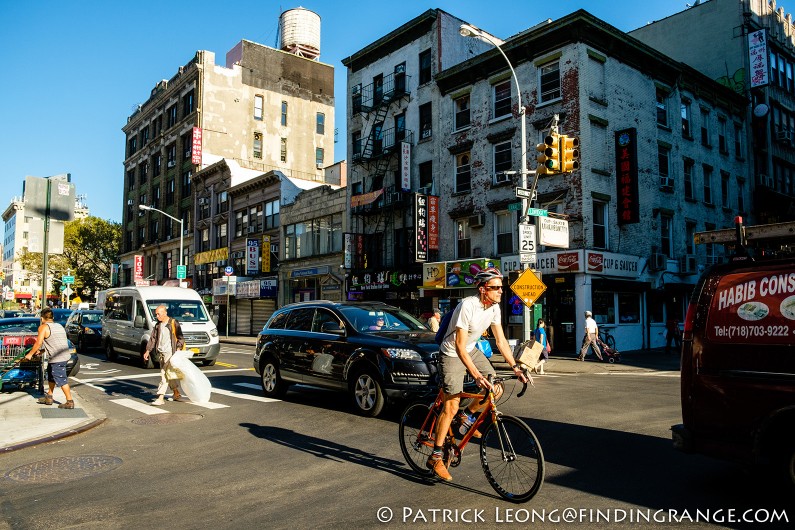
↑ This was taken with the XF 18-55mm at f5.6 using 1000 ISO.

↑ This was taken with the XF 18-55mm at f8 using 800 ISO.
The new Fuji X-T2 (B&H Photo/Amazon) is really an amazing piece of machinery that’s backed by a lens system that is not only diverse but also some of the best optically. It produces absolutely superb image quality, the autofocus is incredibly fast and accurate, and the electronics are top notch. Main controls and features are easily accessible, thanks to its direct and simple analog controls. All of this is packed into a compact and ergonomically comfortable magnesium alloy body that’s weather and dust resistant. Speaking of the body, it still amazes me that the X-T2 is small enough, and quiet enough to be discreet for street shooting yet it has the speed and focusing capabilities for action and sports. This new camera by Fuji is truly versatile in every way. It’s a camera that, quite simply, can do it all. Since we’re on the subject of versatility, it’s also worth noting that while the X-T2 is designed for pro use, someone who is just starting out in photography can still use it to create excellent images because of its user friendliness.
↑ Here is another with the XF 35mm f1.4 wide open. 3200 ISO.

↑ XF 18-55mm at f8. This sensor from the X-T2 produces brilliant colors.
In addition to being so versatile, these X Series cameras are just plain out dependable and reliable. I’ve been an X Series shooter since the original X100, and I can tell you from personal experience that these cameras are pure workhorses. I’ve owned the X100, X-Pro1, X-E1, X-E2, the X-T1, and reviewed practically all the other models and lenses, and they are reliable to a fault. Obviously, I’m speaking through my own personal experience, and others may have different experiences but if you think about it, that’s a lot of models I’ve been through with no problems.
↑ This was taken with the XF 56mm f1.2 APD wide open using 3200 ISO.
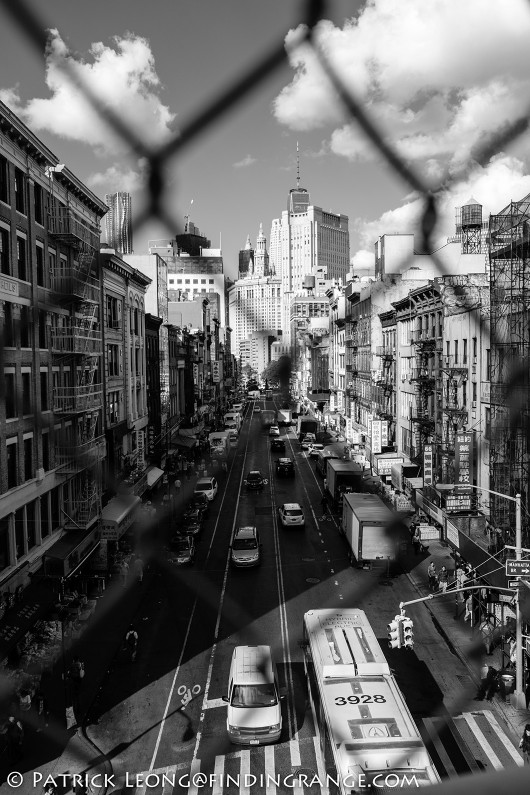
↑ This was taken with the XF 18-55mm wide open.
I have to admit that I was a little afraid of what the X-T2 would be like. I didn’t want Fuji to mess up the X-T Series because I really loved using my X-T1. Realistically, there have been times when manufacturers have screw up a series when they’ve attempted to create a successor. I’m glad to say that in this case, Fuji made the X-T Series only better. In fact, it simply blows my mind how good this camera is, and it’s better than I ever imagined it could be.
Thanks for taking the time to read my review! If you’re considering purchasing the X-T2, and my review helped you decide, please help support this site by purchasing from any of the links in this review. It will not cost you anything extra. Thank you for your support!
Fuji X-T2 at B&H Photo, Amazon or Adorama
Fuji X-T2 with the XF 18-55mm Kit at B&H Photo, Amazon or Adorama
Fuji VPB-XT2 Vertical Power Booster Grip at B&H Photo, Amazon or Adorama


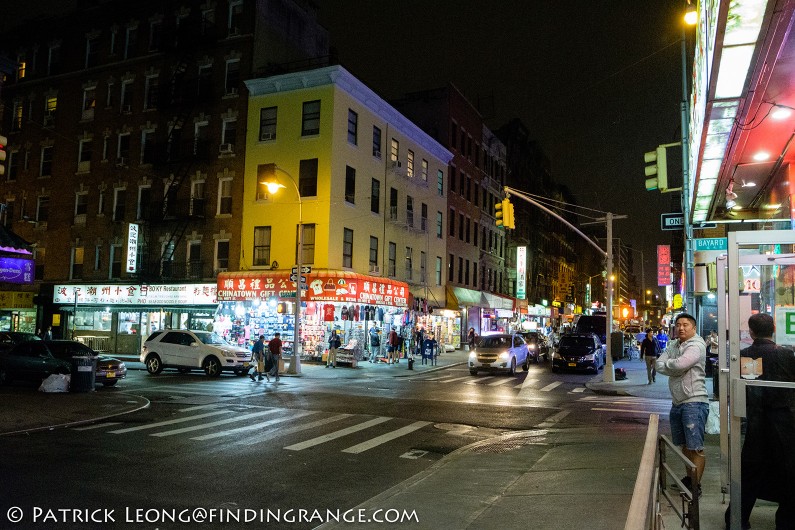
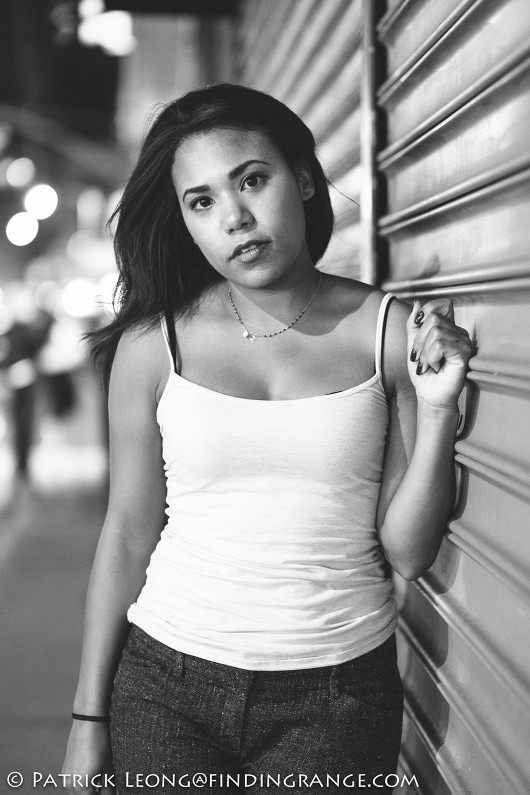
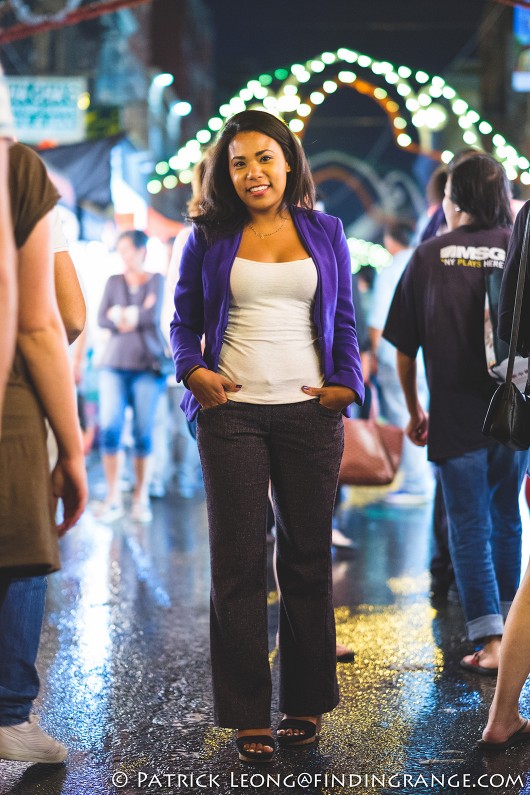
Excellent review and images Patrick. Since you owned all X series camera (X Trans I, X Trans II and X Trans III), can you confirm if the waxy skin tones and/or watercolor effects are still there in this new X Trans III sensor? Thanks.
Thanks Ian!
I appreciate you taking the time to read it! As far as I can tell from my images, I don’t see the waxy skin tones anymore. I just took a few out of camera jpegs right now at 12,800 ISO to double check. If it helps, you can also bring the noise reduction setting down to -4 now as well but I have my camera set at 0. Thanks for stopping by!
Best,
Patrick
Awesome review,now u make me wanna buy one,hahaha….btw always love how u edit ur fuji file,is it raw or JPEG???….
Thanks for the kind words, Meng! If you’re ever in NY, I’d be glad to show you exactly what I do in post processing but I promise you that it’s nothing special. You should get one of these btw ;).
Best,
Patrick
A detailed, beautifully illustrated and, most importantly, useful review. I have come to rely on FINDING RANGE for product reviews without the shallow hype of many other photoblogs.
I appreciate the kind words, inthedarkroom! I’m just glad that you enjoyed it.
Best,
Patrick
Hi Patrick,
The most obvious advancement from previous X series that I notice is the dynamic range but regardless which camera you use, you create awesome photos Patrick! I’m going to read some more and pixel peep hehe.
Dane
Hi Dane,
I’m glad you like the photos, it means a lot coming from you! The dynamic range is much better, and with Fuji’s lens selection, you can get some awesome images but I don’t have to tell you that since you’ve been invested in the X Series for quite some time :). Thanks for stopping by!
Best,
Patrick
Thank you for the review! Glad to hear that you’ve got some good things to say about this after a month of use.
Hi Anthony,
I’m glad to see you here again, and thanks for taking the time to read it! The more I’m using the X-T2, the more I’m enjoying it. Fuji really came out with a winner here :).
Best,
Patrick
Love your photos and your reviews, thanks for sharing. What strap are you using on your x-t2?
Hi Richard,
Thanks for your kind words! The strap is the Artisan and Artist Kobe strap. I reviewed it a log time ago if you’re interested:
http://findingrange.com/2011/08/23/artisan-artist-acam-280-kobe-strap-review/
Thanks for stopping by!
Best,
Patrick
Hi Patrick
A great review.
I am seriously considering selling my Canon 5Dmkiii and lens’s to get this camera.
The main reason being weight – it is spending too much time in its bag – not being taken out and about regularly as I have a health issue and weight has become a major problem.
I take live music photographs on a regular basis and was wondering about the ISO.
Your photos demonstrate how this might not be a problem but I do shoot in some awfully badly lit venues.
I wondered if you’d ever used the camera in such a situation.
Thanks
Elle 🙂
Hi Elle,
Thank you for the kind words, and for taking the time to read it! Unfortunately, I haven’t had the chance to use my X-T2 in badly lit venues yet. I also don’t know how it compares to the 5Dmkiii, since I don’t have one on hand to compare it with (although I may see if I can get a loaner to do a comparison, since a couple of people were wondering) but I can tell you that at least for what I use it for, which is street, even some night portraits, I’m completely content with the high ISO abilities of this camera. The X-T2’s high ISO capabilities are definitely better than its predecessor’s as well.
I hope this helps. I can tell you that the X Series is a great system overall, and this is not just the Fuji user talking :). I’ve been with it since the first X100, and the overall, I find it versatile enough that it covers pretty much all the bases. The optical quality of the lenses are fantastic as well. Please let me know if you have any other questions, and thanks for stopping by!
Best,
Patrick